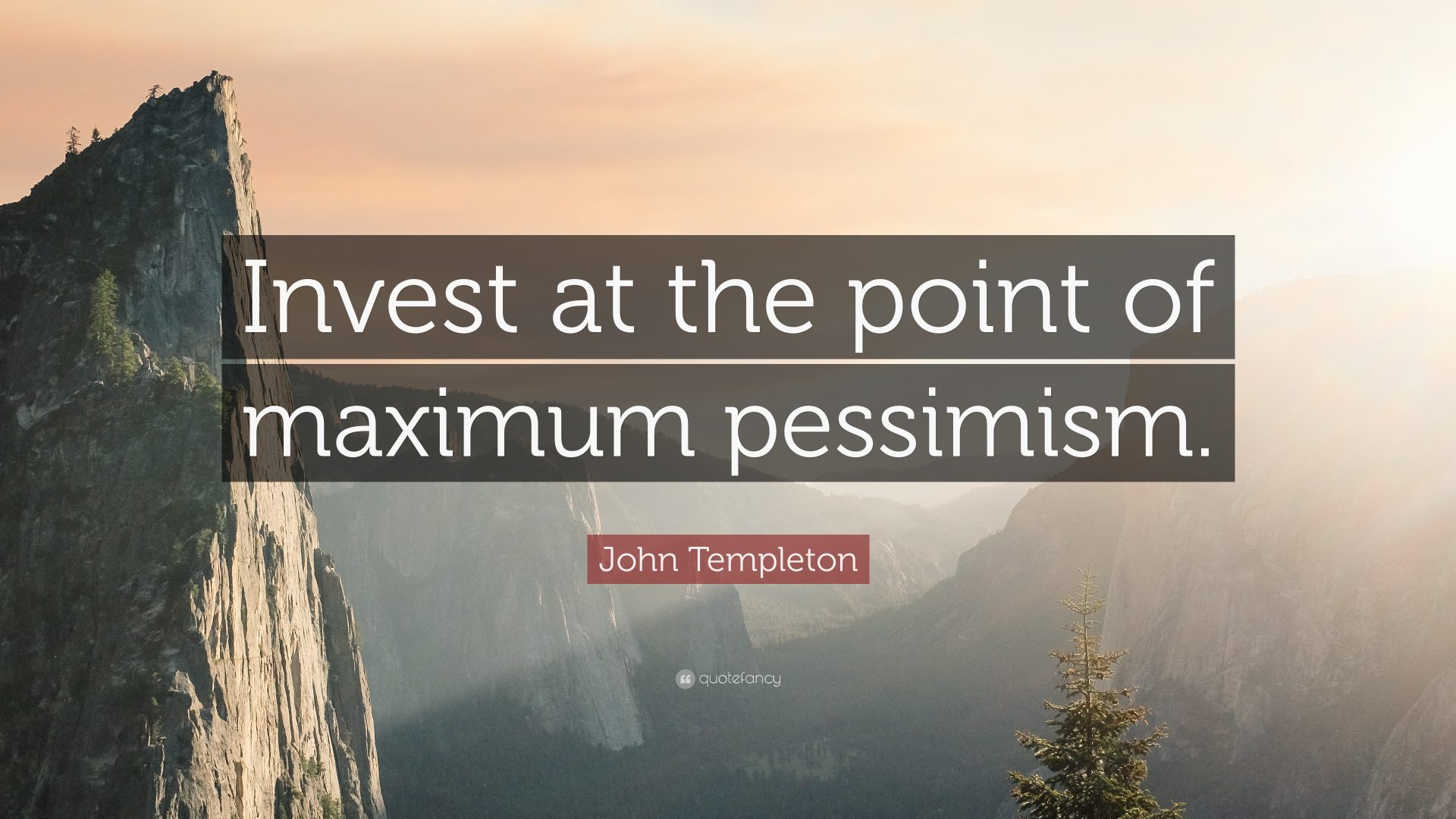Are We At The Point of Maximum Pessimism Yet?
In the middle of the depression in the 1930s, a period laden with wars, the stock market had no appeal to any right-thinking person. The only course of action that makes sense then was to stay out of the market if you are not in it yet or get out if you were in it already.
The reigning market index of the day, the Dow Jones Industrial Average (DJIA) peaked at 381 in 1929 and plunged 89% to 42 by 1932. It was a brutal period, to say the least. I will guess that not one person may be left then to even consider stock investing as an option. If I lived in that time, maybe I would have given up as well.
Simply put, that period was a point of Maximum Pessimism. As of 1939, the DJIA has only managed to recover up to 150. A massive 7 years later and the index is still far from recovering to its all-time-high.
The point of maximum pessimism is a time when investors are desperately trying to sell their investments. It is a point when the media starts to report all doom and no bloom. It is a point when the stock market looks like the image below and fear rules the market.

So are we there now?
My best guess to this answer is that although we may not be there yet as a population, some individuals are there already. And in a lot of ways, we are near there. Robinhood might be the most reflective of reality here. It has lost 10% of its daily active users and trading (crypto) activity fell by about 40% in its last earnings. In the same vein, Netflix, a flagship of the FAANG family, is down more than 70% and other members of the FAANG are not left behind. S&P 500 itself is down about 15% YTD. It seems like there’s nowhere you can turn to, all you see is pessimism.
Could it be that you have also sold your investments in the market and fled for safety? Maybe you have stopped checking your investment app because there’s no point since you are down 90% already and there is nothing salvageable. Maybe you have closed shop and concluded that now is not the best time to invest or that investing in stock is not the right thing for you to do. Have you really started researching real estate?
Well, that’s why I am guessing that we have reached or at least close to if yet to be reached, the point of maximum pessimism.
And what should we do at this critical point?
Sir John Templeton coined the term “point of maximum pessimism”. In his search for maximum returns (alpha), a return that beats the market, he concluded that since the market almost tends to be efficient, you have to look for opportunities where the stock goes down so much that it becomes cheaper for you to get your alpha.
And why will a stock go down enough for you to get an alpha? To that, he answered, “absolutely nothing will make a stock go down to an extremely low price except for other people urgently trying to sell.” I think we have this playing out in the market now.
What should you do when that happens as it is happening now? “You have to buy at that point when others are desperately trying to sell.” What Templeton was searching for was a bargain, cheaper assets. And he realised that the best time to get those is the point of maximum pessimism. Other times are just there to keep activities and of course, make some returns as well.
And it makes sense but is not easy to act on. When Netflix was trading at above 500, everyone wanted to buy it. As I write, it is below 180 but it seems all of a sudden, it is no longer a good buy. Is the company challenged? Of course, yes. Otherwise, why would its price fall that much? However, can the fall be seen as the market being overly pessimistic? My guess tends towards yes. So is PayPal, Shopify and the list goes on. Even Amazon is down by more than 30% YTD.
What a time to witness. What a time for you and I to capitalise on. The task before you and I then is to ask ourselves, which of these beaten-down assets still have a strong business, that is close to sure for them to recover within an acceptable time frame? When you recognise assets like that, you have only one task, buy as many units of it as you possibly can. Come back in some years, and you will be glad you did.
Now, I recognise that not everyone is in the business of buying individual stocks. In fact, if you have read enough articles on this website, you would have noticed that I discourage it based on the simple fact that you are usually not prepared to do the work that is required to pick stocks. And even among those who are doing the work, only a handful brats the market.
In that sense, the best course of action for you then is to buy the market like SPX or any other representative of the S&P 500. It is also currently down 15% year to date. Buy it using dollar-cost averaging. Don’t stop buying because it is falling in price, in fact, falling is the reason why you should buy more. With this strategy as well, you are bound to make good returns on your investment.

